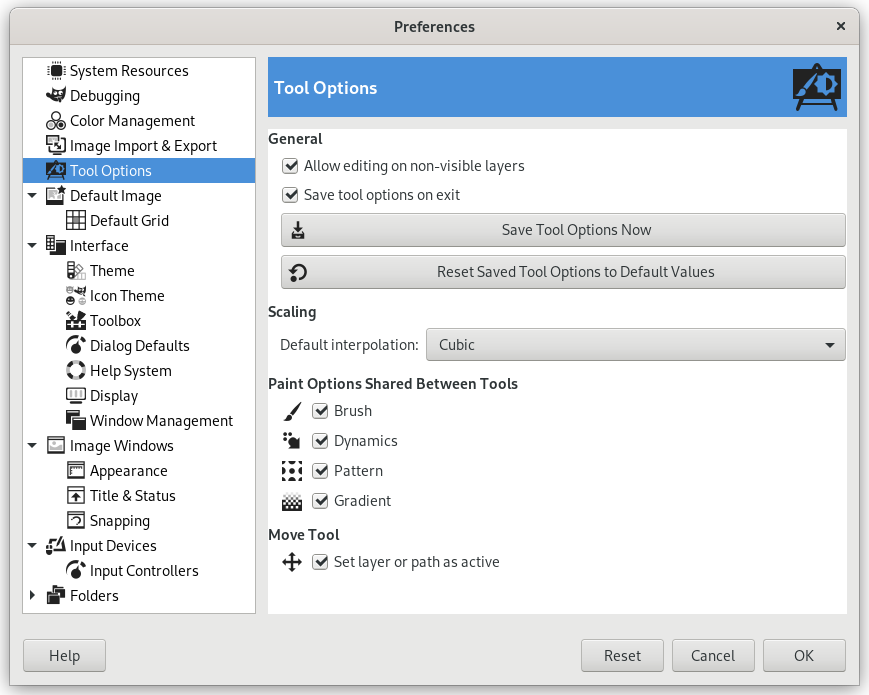This page lets you customize several aspects of the behavior of tools.
General
- Allow editing on non-visible layers
-
You can edit layers with disabled visibility (the eye icon in the layer dock).
- Save tool options on exit
-
When enabled, the Tool Options of all tools will be saved when closing GIMP.
- Save Tool Options Now
-
This immediately saves the current Tool Options of all tools.
- Reset Saved Tool Options To Default Values
-
This resets the Tool Options of all tools to their default values.
Scaling
- Default interpolation
-
When you scale something, each pixel in the result is calculated by interpolating several pixels in the source. This option determines the default interpolation method: it can always be changed, though, in the Interpolation settings of the Transform Tool Options.
The available interpolation methods are described in detail in the Interpolation documentation of the Transform tools.
Paint Options Shared Between Tools
- Brush, Dynamics, Pattern, Gradient, Expand Layers
-
You can decide here whether changing the brush etc for one tool should cause the new item to be used for all tools, or whether each individual tool (pencil, paintbrush, airbrush, etc) should remember the item that was last used for it specifically.
Move Tool
- Set layer or path as active
-
You can decide here whether changing the current layer or path when using the move tool and without pressing any key.




